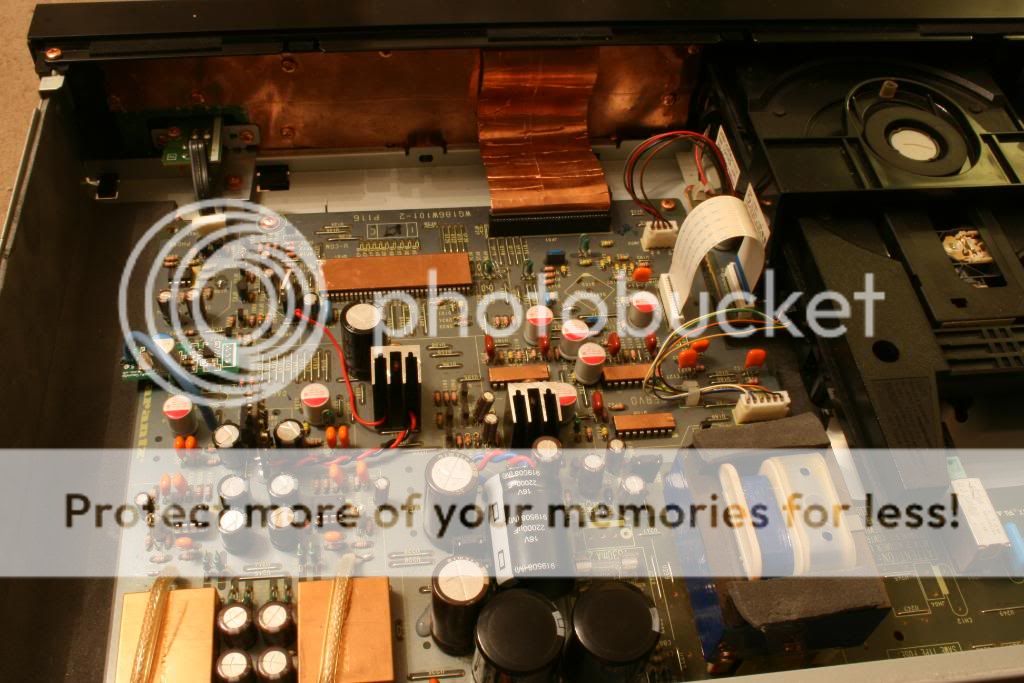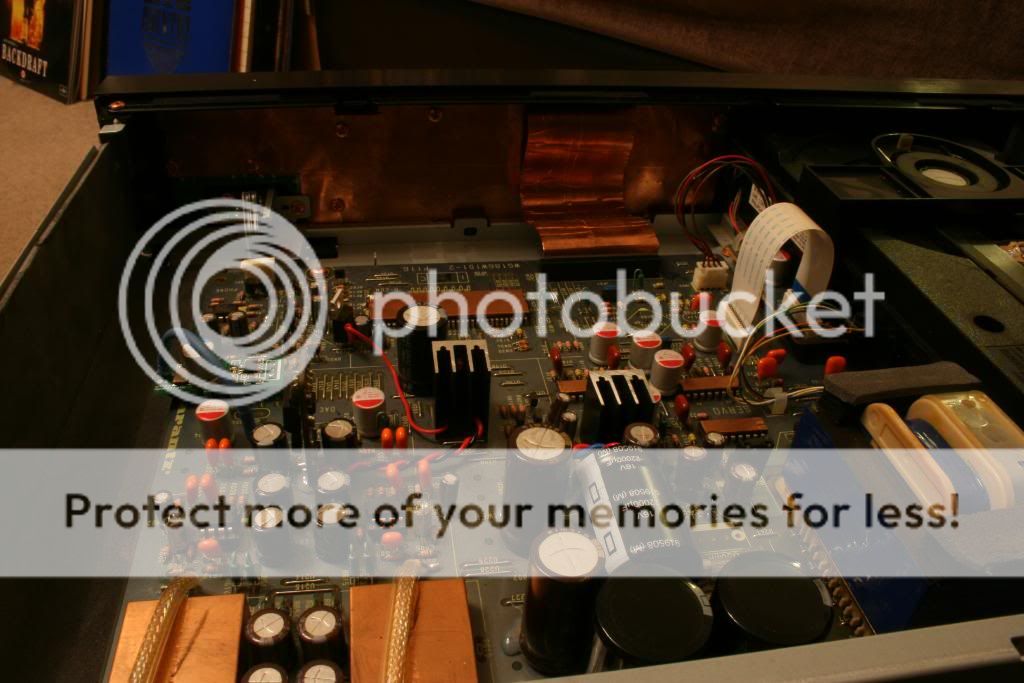The Marantz CD67 is the younger brother of the infamous CD63. It shares the same transport, DAC and output stages as the 63 and much of the power supply is the same. The main difference is the use of a combined reciever/decoder section (identical chip to the much more expensive CD17). Here I'm modifying the OSE version which uses a slightly larger mains transformer, stiffer chassis and (maybe??) a few upgraded capacitors over the standard model.
The main +/- 12v rails are responsible for the analogue audio output stage. Again, more stamina here will give the output stage the ability to track changes in dynamics to the audio much more accurately. The change here is from 1000uF to 6800uF Panasonic TSUP again Low ESR. The last rail is the +5v for the digital side. This is also treated to an increase in pre regulator capacitance. Pre regulator capacitance is shared with the 22,000uF with low ESR Panasonic TSUP reservoir cap & Post regulator 2700uF Rubycon ZL low ESR Cap.
Next on the list to address is local decoupling of the supply rails to the various critical devices around the player. This includes the decoder/Servo chip, Transport, DAC digital & analogue and output stage. Where a digital rails is identified, solid polymer type electrolytic are used (Nichicon Ultra low ESR 330uF) and where analogue rails are identified, Traditional electrolytic (470uF Rubycon ZLG Low ESR electrolytic).
A new low noise low Jitter system clock drive timing in the digital domain. The original system xtal is replaced by a low jitter oscillator driven by its own low noise regulation. This improves overall accuracy in data processing and has a profound effect on detail presentation.
The first version of Marantz HDAM somewhat cloud and bloat the sound when the player is pushed. At this level of modification they are completely bypassed as the signature they add is not required. The Analogue filter circuit is modified to a "Bessel" design to slightly reign in the harsh top and improve the group delay. A separate low noise voltage regulator supplies the DAC Analogue rails. Experience shows that this rail responds exceptionally well to this sort or separate discrete regulation. The gains here are are improvements in detail separation and this starts to open the sound stage. This is always the first place to put any discrete regulation in the 63 or 67 series of players (they share identical circuits from the DAC to output stage).
Also forming the active part of the analogue output stage are opamps. TheDAC out passes through a dual opamp and (now modified) filter circuit which performs filtering in the 1st stage and unity gain buffer in the second. Basic non-audio grade opamps seriously restrict and shut in the sound. Modern audiophile specific opamps like LM4562 & LME49720 along with quality local PSU decoupling are incredibly significant upgrades in the analogue stages. Another significant upgrade is to replace the DC blocking capacitors after the opamp stage. The job of these caps is to block any DC content on the player output. It is widely agreed that any sort of electrolytic cap actuallyin line with the signal is a bad thing. Marantz acknowledge this by using high quality more expensive bi-polar electrolytic caps (Elna Silmic) for this purpose. They are better than standard caps but still nowhere are near as good as quality film caps. This upgrade replaces the caps with quality audio grade MKP film caps.
Finally,Closed cell Mechanical case damping is applied to upper and lower covers in order to reduce any case resonance. Copper foil film is placed on the back of the display panel to help with isolation. Ribbon cables are also covered with copper foil shielding.
The main CPU is also shielded to GND and supplied with its own std 5v regulator. The reason for this is to keep the noisy processor from adding noise onto the main rails that supply devices dealing with delicate digital and analogue signals.
Final modification is to fit a blue filter to the display. No audio gain but I think it looks better than the standard green....
Upgrade parts list
1 x Panasonic TSUP 22,000uF Cap - pre 5v regulators
2 x Panasonic TSUP 6800uF Cap - Pre +/-12v regulators
1 x Rubycon ZL 2700uF Low ESR, Low Impedance Cap - Post +5v regulator
2 x Elna Silmic 470uF Cap - Post +/-12v regulators
8 x Nichicon 330uF Solid polyer Ultra Low ESR Cap - Servo Driver IC's (3), Digital decoder/Servo (2), Transport (1) and DAC Digital local decoupling
2 x Rubycon ZLG 470uF Low ESR, Low Impedance Cap - DAC Analogue local decoupling
4 x Rubycon ZLG 470uF Low ESR, Low Impedance Cap - Analogue output opamp decoupling
2 x 4.7uF MKP - Audio grade cap for DC blocking output coupling
2 x LME High Performance High Fidelity OpAmp (Widely regarded as the best audio grade opamp available (LM4562, LME47920 & LME49860)
2 x 470pF Styrene caps (Bessel Filter)
1 x 16.384Mhz Low jitter reference clock - Hifisounds designed - This is not the usual eBay basic clock from the far east.
1 x FET based ultra low noise 5v regulator for DAC Analogue supply
HDAM bypassed and supply isolated from the +/-12v rail
Copper shield for display panel and ribbon connectors
Sound deadening applied to case
Separate std regulation for CPU






